Distributions
A number of fields allow you to express values as a distribution. The column drop-down provides a visual way to enter these values, using the Distribution Builder.
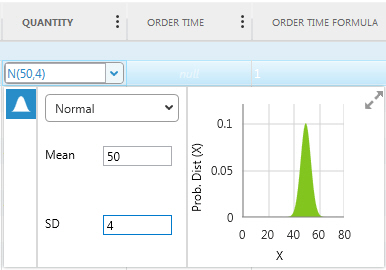
Define a distribution
- Click the drop-down arrow for the column to access the field builders. If the column has more than one field builder available, click
 to access the Distribution Builder.
to access the Distribution Builder. - Select the distribution type from the drop-down list. The default is Normal. Corresponding fields are displayed on the form for data entry based on the type of distribution you select. For example, when a Normal distribution is chosen, Mean and SD are available. After entering these values, you see a thumbnail of the distribution.
- To access the full size Distribution Builder fly-out, click
 .
.The probability distributions you can select are:
- Normal – The probability follows a standard bell curve. Enter the Mean and Standard Deviation (SD).
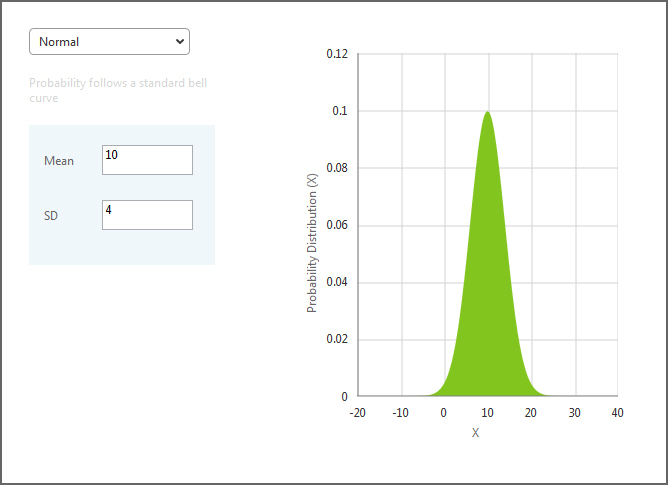
- Exponential – With this distribution, the probability of smaller numbers is greater. Enter the Mean.
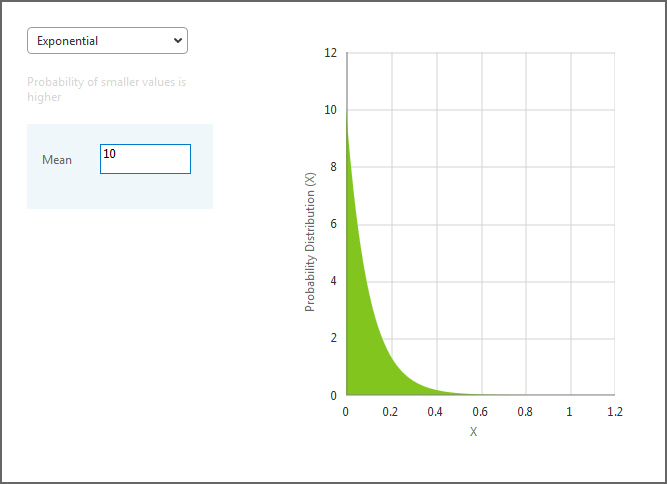
- Uniform – The probability is evenly distributed. Enter a Number and a Range.
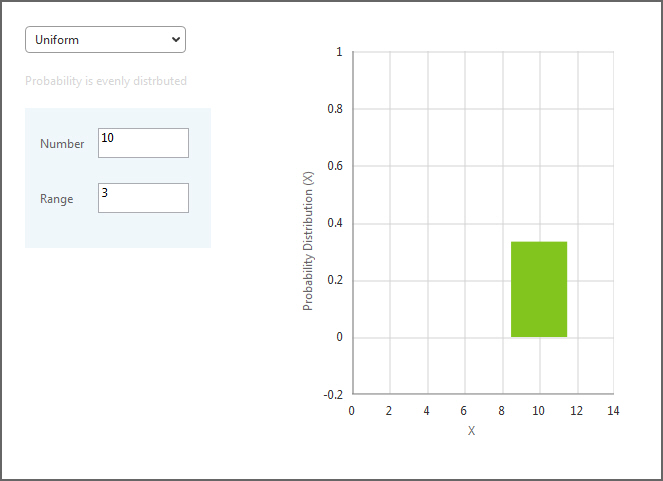
- Triangular – The probability follows a triangular shape. Enter a Min, a Max, and a Mode.
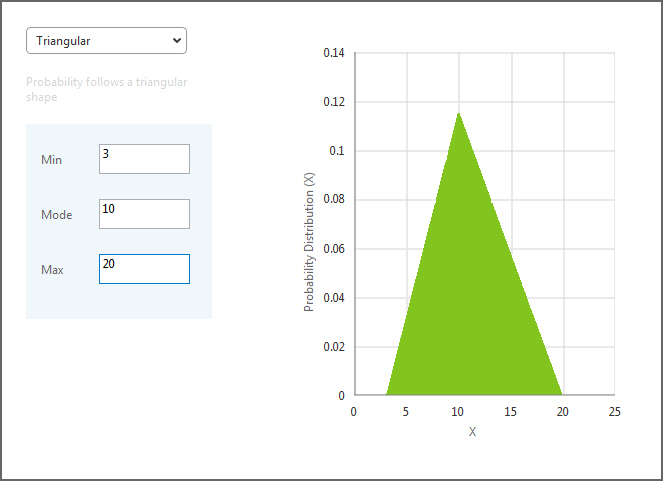
- Poisson – This distribution generates integer values. Enter a Mean.
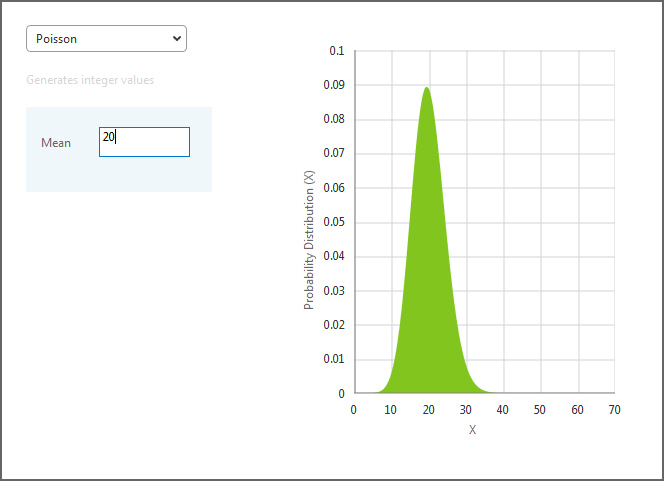
- Lognormal – The probability follows a bell curve after a log transform. Enter the Mean and Standard Deviation (SD) after the log transform.
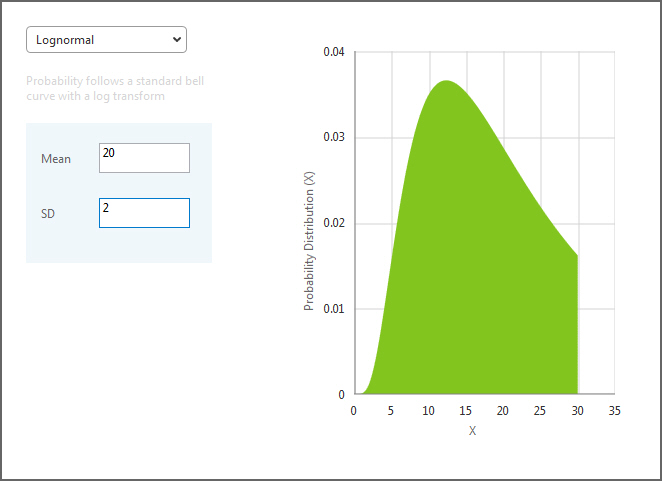
- Bounded Normal – The probability follows a standard bell curve within the specified range. Enter the Mean and Standard Deviation (SD), as well as the Min and Max values of the range.
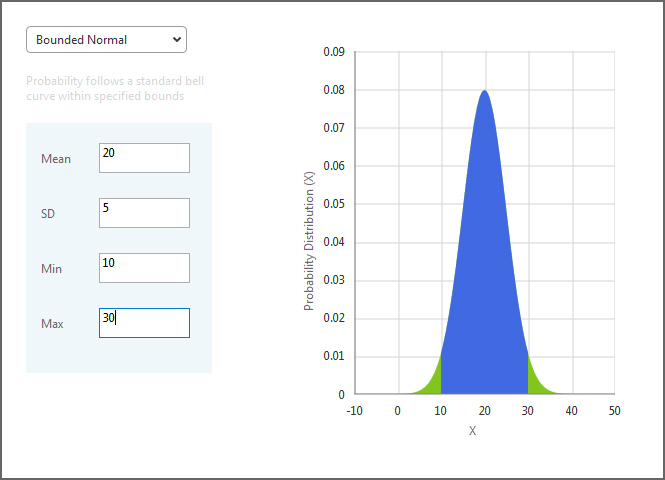
- Bounded Exponential – With this distribution, the probability of smaller numbers is greater up to a specified maximum. Enter the Mean and the Max.
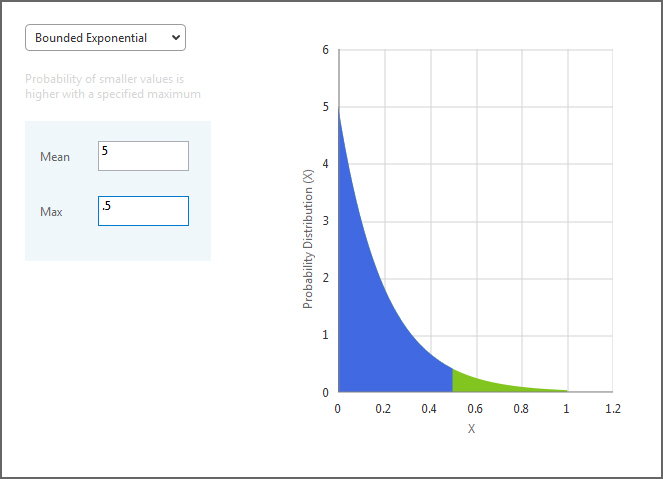
- Bounded Lognormal – The probability follows a standard bell curve, with a log transform, within the specified range. Enter the Mean and Standard Deviation (SD), as well as the Min and Max values of the range.
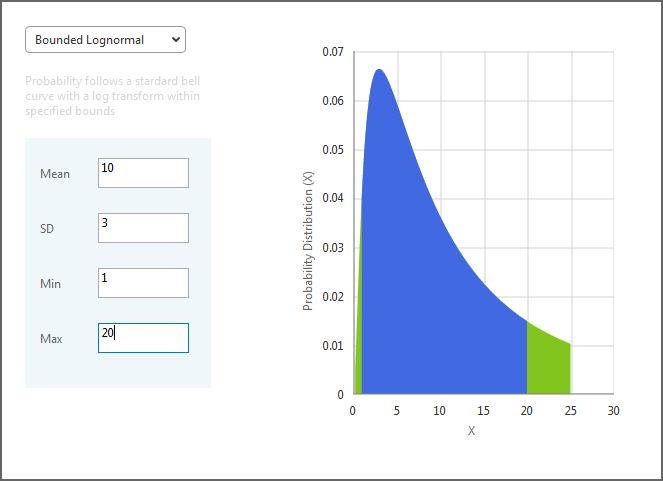
- Normal – The probability follows a standard bell curve. Enter the Mean and Standard Deviation (SD).
Last modified: Wednesday May 15, 2024
